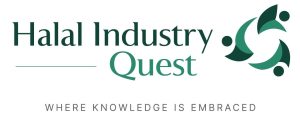The following high-risk additives and enzyme ingredients may require Halal Certification or a Vegetarian or Vegan-approved stamp. Vegetarian or Vegan only apply if they have no animal-based materials, by-products, or alcohol (You need advanced knowledge to identify the substance because sometimes it may not appear on the product labels. It is safe to use a Halal certificate). The kosher certificate may not be applicable due to the complexity of how it has been approached.

We recommend this app to check the material details.
To name a few – High-Risk Additives:
| E101 1) Riboflavin 2) Riboflavin-5′- Phosphate” E418 Gellan Gum E422 Glycerol / Glycerine / Glycerin E432 Polysorbate 20 E433 Polysorbate 80 E434 Polysorbate 40 E435 Polysorbate 60 E436 Polysorbate 120 E470 Sodium, Potassium and Calcium Salts of Fatty Acids E471 Mono-and Diglycerides of Fatty Acids E472 Esters of Mono- and Diglycerides
|
E473 Sucrose Esters of Fatty Acids High-Risk Enzyme:
|
Other norms and requirements for certifications are :
- Cheese
- Meat / Protein
- Gelatine
- Enhancer, Stabilizer, Flavoring e.g., Yeast, Flavors, Aroma, Smoke Powder
- Permissible Industry Alcohol (Certification only for Halal)
- Cleaning Detergent e.g., Stearic Acid, Glycerine
Ingredients that may contain alcohol substance:
|
|
Other ingredients that may contain animal derivatives:
- Arachidyl Proprionate – A wax that can be from animal fat. Alternatives: peanut or vegetable oil.
- Behenyl Alcohol—Behenyl Alcohol is a fatty alcohol obtained from natural fats (animal or vegetable fat) or oils.
- Beta-hydroxy acid (BHA) or butylated hydroxytoluene (BHT) is a chemical preservative that is always available with a fat-based carrier. Vegetable oil is halal if used as a carrier.
- Biotin – In every living cell and in larger amounts in milk and yeast. Alternatives: plant sources
- Bone Char – Animal bone ash. Used in bone china and often to make sugar white.
- Butterfat is lipolysis due to the source of enzymes.
- Carbamide / Urea – Typically synthetic. When extracted from animals, it is excreted from urine and other bodily fluids. Used to “brown” baked goods, such as pretzels. Derivatives: Imidazolidinyl Urea, Uric Acid. Alternatives: synthetics.
- Calcium Stearate – is the calcium salt of stearic acid. Stearic acid can be obtained other than from vegetable fat, which makes it doubtful.
- Calcium Stearoyl Lactylate – It is obtained from fat.
- Carotene / Provitamin A / Beta Carotene—A pigment found in many animal tissues and all plants. When used as an additive, it is typically derived from plant sources. It is used as a coloring in cosmetics and in the manufacture of vitamin A.
- Caseinates – milk protein obtained from curding the milk. Protein sources need to be verified.
- Castor. Castoreum – Creamy substance with a strong odor, originally from muskrat and beaver genitals but now typically synthetic.
- Cetyl Alcohol, Butyl Alcohol – Cetyl alcohol and butyl alcohol are not ethyl alcohol but fat waxes.
- Chitosan is a fiber derived from crustacean shells. It is mushbooh for some Muslims. Alternatives include raspberries, yams, legumes, dried apricots, and many other fruits and vegetables.
- Collagen is a fibrous protein found in vertebrates. It is usually derived from animal tissue and is an allergen. Alternatives include soy protein, almond oil, and amla oil (see alternatives to Keratin).
- Elastin is a protein found in cows’ neck ligaments and aortas. It is similar to collagen but does not affect the skin’s own elasticity. Alternatives: synthetics and protein from plant tissues.
- Lecithin. Choline Bitartrate—A waxy substance found in the nervous tissue of all living organisms, lecithin is frequently obtained for commercial purposes from eggs and soybeans, nerve tissue, blood, milk, and corn. Choline bitartrate, the basic constituent of lecithin, is found in many animal and plant tissues and prepared synthetically. Lecithin can be used in detergent. Alternatives: soybean lecithin, synthetics.
- Lipoids. Lipids – Fat and fat-like substances that are found in animals and plants. Alternatives: vegetable oils.
- Methionine – Essential amino acid found in various proteins (usually from egg albumen and casein). Used as a texturizer and for freshness in potato chips. Alternatives: synthetics.
- Myristic Acid – Organic acid typically derived from nut oils but occasionally of animal origin. Used in food flavorings. Derivatives: Isopropyl Myristate, Myristal Ether Sulfate, Myristyls, Oleyl Myristate. Alternatives: nut butter, oil of lovage, coconut oil, extract from seed kernels of nutmeg, etc.
- Oleic Acid is obtained from various animal and vegetable fats and oils. It is usually obtained commercially from inedible tallow (animal fat). It is used in foods, detergents, and bar soap. Derivatives: Oleyl Oleate and Oleyl Stearate. Alternatives: coconut oil. (See alternatives to Animal Fats and Oils.)
- Propylene Glycol Monostearate – if with monostearate, it may be obtained from fat.
- Rennet. Rennin is an enzyme from calves or pig stomachs. It is used in cheese making, rennet custard (junket), and many coagulated dairy products. Alternatives include microbial coagulating agents, bacteria culture, lemon juice, or vegetable rennet.
- Retinol – Animal-derived vitamin A. Alternative: carotene.
– JAKIM / HDC Malaysia
– Muslim Consumer Group USA / Canada
– PETA.org
– Food-info.net
– Ifanca USA



[…] lard or alcohol flavors. About 26% of commercial butter products could have non-halal ingredients13. Check labels carefully for any additives in butter that could be a problem. Choose truly halal […]